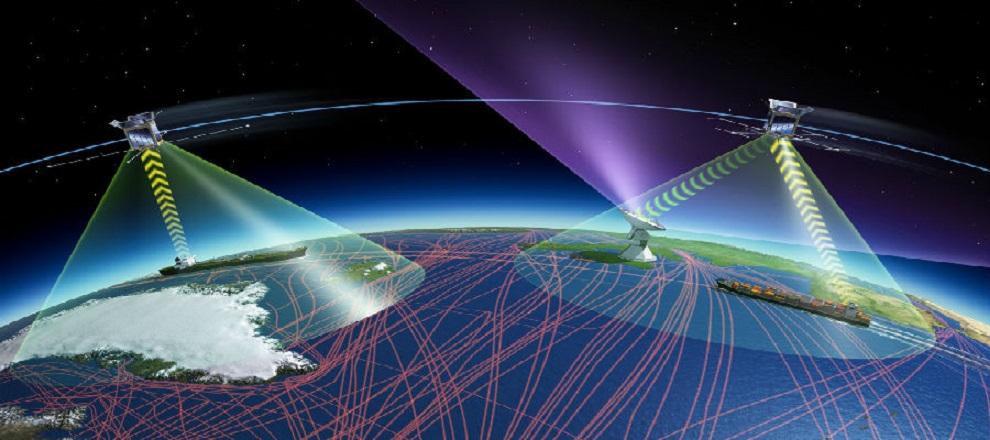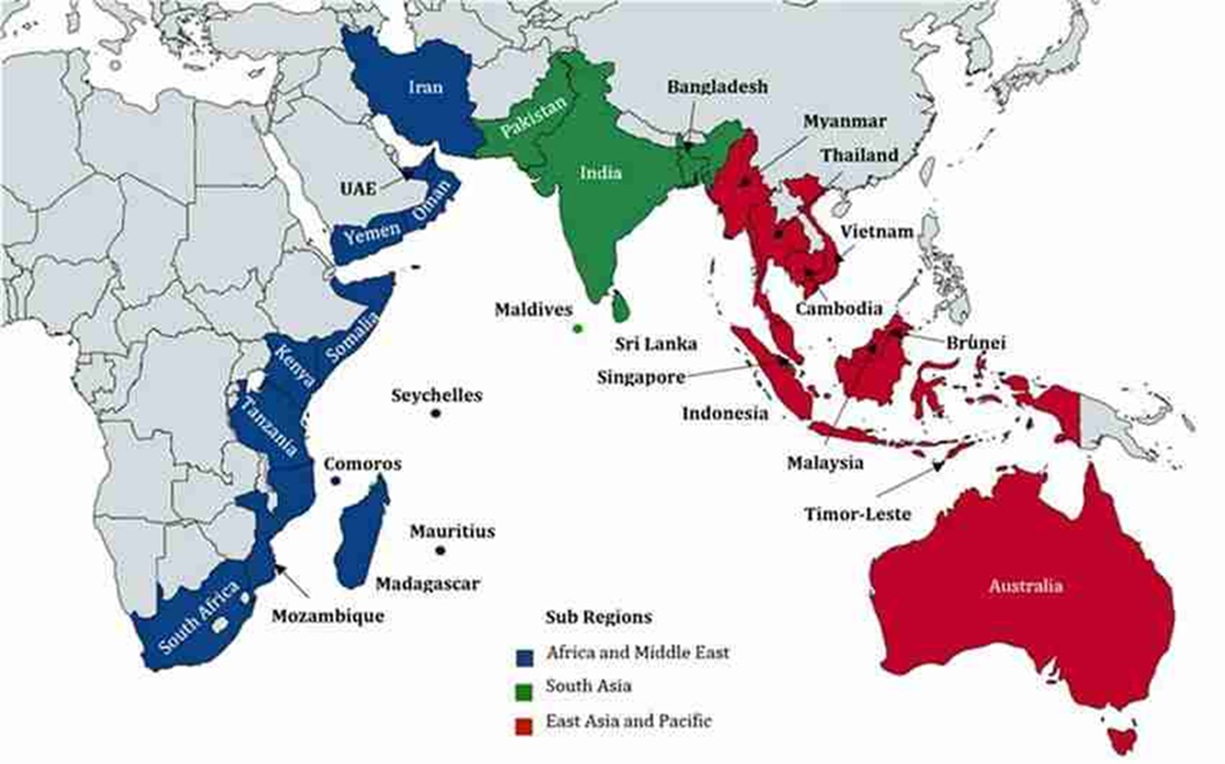Last week, SpaceX added 60 new satellites to the Starlink internet constellation, an internet service project which aims to provide broadband services across the globe. Also, it’s booster stage reusable rocket which packs more than 1.7 million pounds of thrust, was successfully recovered after a ‘smooth touchdown’ in the Atlantic Ocean by SpaceX’s drone ship1. According to Elon Musk, the founder of the SpaceX, his company has plans to launch nearly 12,000 satellites into orbit to provide high-speed broadband internet at locations where access is “unreliable, expensive, or completely unavailable”. 2
Meanwhile, SpaceX has received orders from the US Space Development Agency (SDA) for satellites that can track and provide early warnings of hypersonic missile launches. The satellites are part of the SDA’s Tracking Layer which will work in conjunction with the proposed Transport Layer (constellation of between 300 and 500 satellites) and will provide “low-latency military data and connectivity worldwide” to military assets.3 Earlier, in July, SpaceX launched Anasis-2 military communications satellite for South Korea.4
Satellites have been in the inventory of modern militaries and used for navigation, accurate delivery of ordnance over long distances, and intelligence, surveillance and reconnaissance (ISR) tasks. The two Gulf Wars and the global war on terror demonstrated that satellites were game changers and facilitated accurate targeting of terrorists and their hideouts with little collateral damage. However, satellites attract a very high price tag and it is expensive to launch these notwithstanding the fact that these days it is possible to put multiple units into orbit using single and reusable rocket as has been demonstrated by the SpaceX programme.
Solar Powered UAVs (SPUAV) too are the leading technologies in the defence aerospace industry and are gaining popularity. These can be positioned in ‘Near Space’ in which aircraft do not fly, no satellite is positioned, and fuel-powered UAVs are unable to operate due to thin air which hampers the functioning of the engine. This area is a ‘space desert’ and has remained underutilized; however, it is now being populated with sub-orbital rockets, high-altitude balloons which can easily jump into and out of near space. The SPUAVs can provide persistent satellite-like services. Besides, these are cheaper and do not require fuel. Being lighter, they can remain aloft for extended periods of time and therefore are cost-effective. These also fulfil many of the missions now assigned to satellites or to high-altitude aircraft, such as the U-2, or Global Hawk UAV.
What is perhaps significant is that the SPUAVs would operate above the weather, be inherently stealthy, and fly above the range of nearly all threats. The cameras at that high altitude can see for several hundred miles farther than with aerial photography and access to a given area is more flexible than with the infrequent pass made by remote sensing satellite.
It is possible to exploit SPUAVs for several other functions such as secure communications, internet, coastal surveillance, earth remote sensing and ISR. These could remain on station for months, far longer than traditional UAVs and these may even have a longer shelf-operational life when compared with certain satellites. A constellation of 40 or 50 SPUAVs can thus undertake seamless ISR operations of strategic civilian and military infrastructure, coastal security and environmental monitoring. Also, SPUAVs can provide stable cellular and internet services in developing countries where remote areas are in desperate need of digital connectivity.
In the maritime domain, the belief that the oceans and seas are so large that it is impossible to keep an eye on every inch of this enormous space has attracted the proverbial saying ‘finding a needle in a haystack’. This limitation is a passé and it is fair to envision a future in which the celestial space would be overwhelmed by satellites, Near Space technologies and UAVs. These platforms will generate enormous amounts of ISR data which would need to be processed and put to operational use that can potentially overwhelm the humans.
The global community is fast exiting the ‘age of information’ that featured information and communication technologies (ICT); it is now entering a new world of “knowledge-based environment” driven by the Fourth Industrial Revolution (4IR) technologies that are smart and intelligent, use predictive-cognitive tools and algorithms, and drive autonomous, unmanned and remote-controlled platforms, robots and machines. Some of the frontline technologies of 4IR are Artificial Intelligence (AI), Machine Learning (ML), Big Data, cloud computing, Augmented Reality (AR), Quantum Computing, Cognitive Computing (CC) and Internet of Things (IoT) are gathering momentum and finding use in supporting ISR operations.
These would radically transform ISR landscape not only how we design and develop new ISR platforms, but also how to maximize outcomes. In particular, the tools of generating Maritime Domain Awareness through traditional sources such as the Automatic Identification System (AIS) and the long-range identification and tracking (LRIT), a satellite-based, real-time reporting mechanism for reporting the position of ships, shore-based Electro-optical systems and high definition radars would need to be upended with 4IR-enabled systems to overcome weakness such as AIS data manipulation, Global Navigation Satellite System (GNSS) spoofing and jamming attacks and cyber-attacks. The World Economic Forum’s Global Risks Report 2020 has listed cyber-attacks on critical infrastructure as the fifth top risk in 2020 and has a reference to shipping.5 Besides, AI and ML can help analyze the entire synchronization networks, forewarns service degradation and prepare for potential maintenance of the GNSS thereby ensuring these vital services are not disrupted.
At another level, a robust AI-based MDA can potentially contribute to transparency across the seas and oceans by integrating multi-source data, analytics and advanced Cloud services, It is a promising technology to track vessels, determine the type of cargo, business behaviour of shipping companies including freight forwarders as also in countering crimes at sea, particularly Illegal, Unreported and Unregulated (IUU) fishing which is high on the agenda for debate and discussions at the level of the United Nations and regional maritime security arrangements.
Title image courtesy:https://mfame.guru/
Disclaimer: The views and opinions expressed by the author do not necessarily reflect the views of the Government of India and Defence Research and Studies
Notes:
1.“SpaceX just launched 60 new Starlink internet satellites and nailed rocket landing at sea”, https://www.space.com/spacex-starlink-satellites-launch-rocket-landing-oct-18-2020 (accessed 24 October 2020).
2. “Elon Musk’s ‘internet from space’ service coming in six month”, http://timesofindia.indiatimes.com/articleshow/75356989.cms?utm_source=contentofinterest&utm_medium=text&utm_campaign=cppst (accessed 24 October 2020).
3. “SpaceX receives contract to build missile-tracking satellites for the Defense Department”, https://www.theverge.com/2020/10/6/21503165/spacex-space-development-agency-contract-missile-warning-satellites-starlink (accessed 24 October 2020).
4.“SpaceX launches South Korea’s 1st military satellite, nails rocket landing at sea”, https://www.space.com/spacex-launches-south-korean-military-satellite-anasis-2-lands-rocket.html (accessed 24 October 2020).








